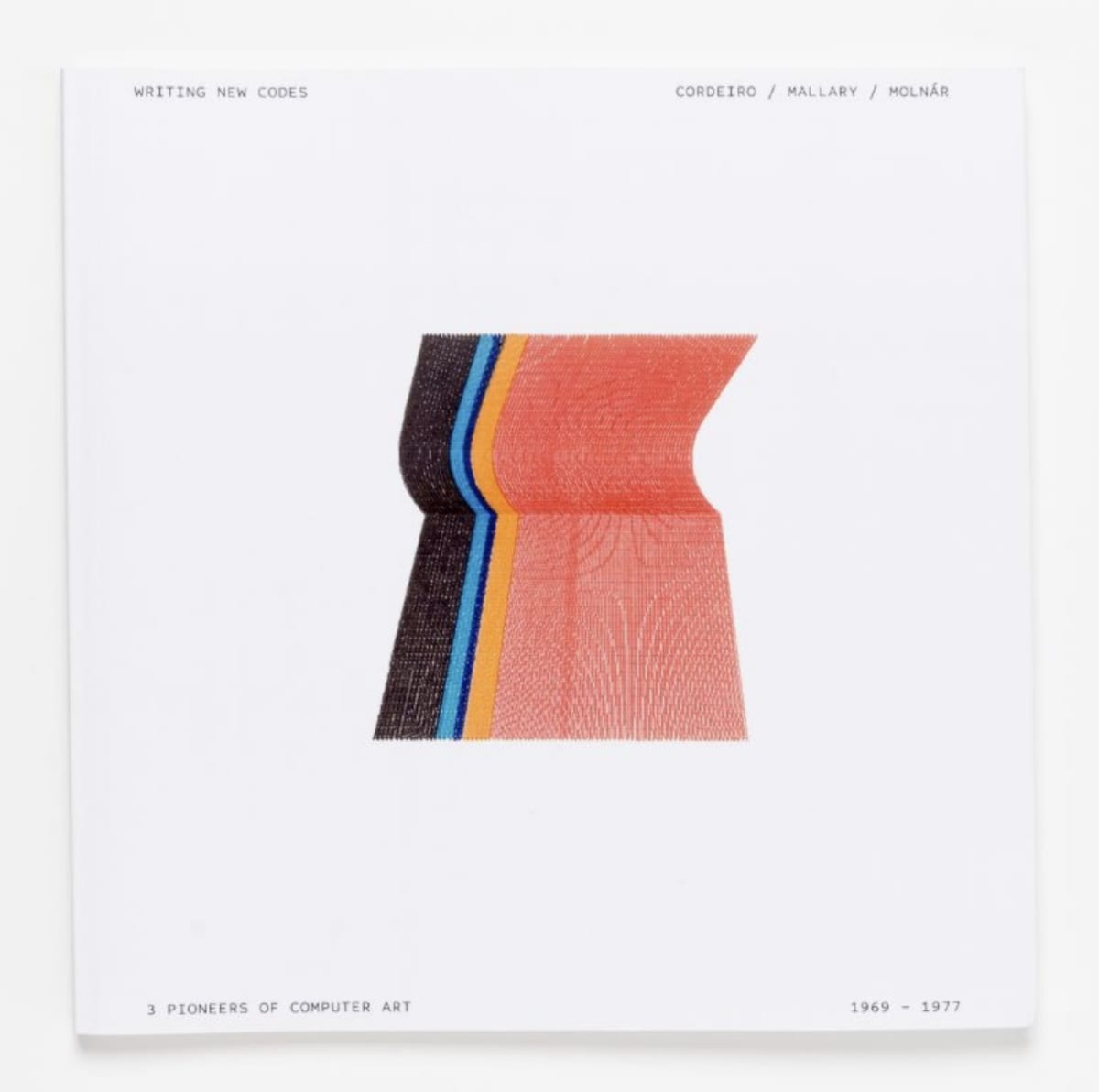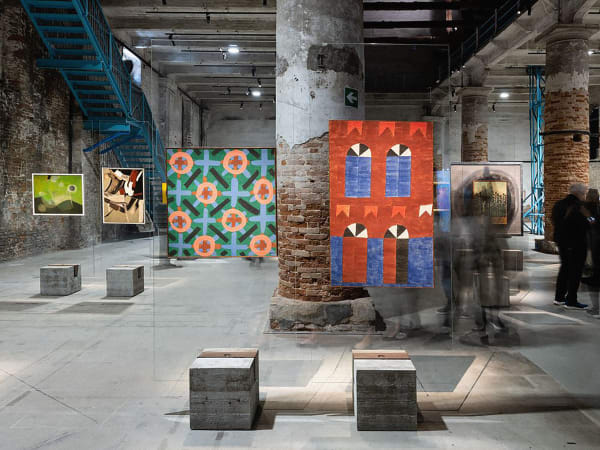Waldemar Cordeiro Brazilian, 1925-1973
Overview
Arriving in Brazil in 1946 Cordeiro (b. 1925 Rome, Italy – d. 1973 São Paulo, Brazil) settled in São Paulo in the following year initially working as a journalist, art critic and newspaper caricaturist. In 1949, Cordeiro participated in From Figurativism to Abstractionism, at the newly opened São Paulo Museum of Modern Art where abstraction gained institutional backing. He participated in the first São Paulo International Biennial in 1951 and in various subsequent ones.
Cordeiro was Communist, his politics and art theory combined making him a proponent of art as a fundamental element of the social transformation process, firmly believing art should be accessible to all, rejecting the hedonistic idea of ‘art for art’s sake’. He promoted these ideals though public art projects and his landscape design company. As he wrote in the manifest of Grupo Ruptura founded in 1952 with artists such as Luiz Sacilotto and Lothar Charoux “Modern Art is not ignorance. We are against ignorance“.
He followed closely Max Bill’s Concrete Art concepts and studied Visual Gestalt principles. Cordeiro wanted to produce a new Rational art through the use of simple elements; line and colour.
From 1965 to 1968 he created work based on the principles of Opera Aperta (Umberto Eco) in the New Tendencies movement. Later, from 1969 to 1973 he introduced Computer Art to Latin America, a movement he called Arteonica which was for him a logical progression of Concrete Art.
Works
-
 Waldemar CordeiroGente Grau 0, 1973Computer output on paper140.5 x 75 cm
Waldemar CordeiroGente Grau 0, 1973Computer output on paper140.5 x 75 cm
55 1/4 x 29 1/2 inches -
 Waldemar CordeiroThe Woman is Not B.B. (Brigitte Bardot), 1971Computer output on paper61 x 44.5 cm
Waldemar CordeiroThe Woman is Not B.B. (Brigitte Bardot), 1971Computer output on paper61 x 44.5 cm
24 x 17 1/2 inches -
 Waldemar CordeiroThe Woman is Not B.B. (Brigitte Bardot), 1971Computer output on paper61 x 44.5 cm
Waldemar CordeiroThe Woman is Not B.B. (Brigitte Bardot), 1971Computer output on paper61 x 44.5 cm
24 x 17 1/2 inches -
 Waldemar CordeiroThe Woman that is Not B.B. (Brigitte Bardot), 1971Computer output on paper61 x 44.5 cm
Waldemar CordeiroThe Woman that is Not B.B. (Brigitte Bardot), 1971Computer output on paper61 x 44.5 cm
24 x 17 1/2 inches -
 Waldemar CordeiroDerivatives of an Image: Transformation in Degree 0, 1969Offset print61 x 44.5 cm
Waldemar CordeiroDerivatives of an Image: Transformation in Degree 0, 1969Offset print61 x 44.5 cm
24 x 17 1/2 inches -
 Waldemar CordeiroDerivatives of an Image: Transformation in Degree 0, 1969Offset print61 x 44.5 cm
Waldemar CordeiroDerivatives of an Image: Transformation in Degree 0, 1969Offset print61 x 44.5 cm
24 x 17 1/2 inches -
 Waldemar CordeiroDerivatives of an Image: Transformation in Degree 1, 1969Offset print61 x 44.5 cm
Waldemar CordeiroDerivatives of an Image: Transformation in Degree 1, 1969Offset print61 x 44.5 cm
24 x 17 1/2 inches -
 Waldemar CordeiroDerivatives of an Image: Transformation in Degree 1, 1969Offset print61 x 44.5 cm
Waldemar CordeiroDerivatives of an Image: Transformation in Degree 1, 1969Offset print61 x 44.5 cm
24 x 17 1/2 inches -
 Waldemar CordeiroUntitled, 1965India ink on tracing paper32 x 45 cm
Waldemar CordeiroUntitled, 1965India ink on tracing paper32 x 45 cm
12 5/8 x 17 3/4 inches -
 Waldemar CordeiroUSCOQ, 1965Gouache on tracing paper21.5 x 32 cm
Waldemar CordeiroUSCOQ, 1965Gouache on tracing paper21.5 x 32 cm
8 1/2 x 12 5/8 inches -
 Waldemar CordeiroUntitled, 1963Oil on canvas24.3 x 31.7 cm
Waldemar CordeiroUntitled, 1963Oil on canvas24.3 x 31.7 cm
9 5/8 x 12 1/2 inches -
 Waldemar CordeiroUntitled, 1963Oil on canvas75 x 74.5 cm
Waldemar CordeiroUntitled, 1963Oil on canvas75 x 74.5 cm
29 1/2 x 29 3/8 inches -
 Waldemar CordeiroUntitled, 1963Oil on canvas18.5 x 27 cm
Waldemar CordeiroUntitled, 1963Oil on canvas18.5 x 27 cm
7 1/4 x 10 5/8 inches -
 Waldemar CordeiroUntitled, 1963Oil on canvas37.5 x 36 cm
Waldemar CordeiroUntitled, 1963Oil on canvas37.5 x 36 cm
14 3/4 x 14 1/8 inches -
 Waldemar CordeiroUntitled, 1961Oil on canvas76.3 x 38 cm
Waldemar CordeiroUntitled, 1961Oil on canvas76.3 x 38 cm
30 x 15 inches -
 Waldemar CordeiroUntitled, 1952Enamel on plywood23.5 x 30.5 cm
Waldemar CordeiroUntitled, 1952Enamel on plywood23.5 x 30.5 cm
9 1/4 x 12 1/8 inches -
 Waldemar CordeiroUntitled, 1952Tempera on wood panel29.5 x 41 cm
Waldemar CordeiroUntitled, 1952Tempera on wood panel29.5 x 41 cm
11 5/8 x 16 1/8 inches -
 Waldemar CordeiroUntitled, 1951Tempera on cardboard on wood27 x 21 cm
Waldemar CordeiroUntitled, 1951Tempera on cardboard on wood27 x 21 cm
10 5/8 x 8 1/4 inches -
 Waldemar CordeiroUntitled, 1949China ink on paper15.5 x 22.4 cm
Waldemar CordeiroUntitled, 1949China ink on paper15.5 x 22.4 cm
6 1/8 x 8 7/8 inches
Exhibitions
-

TEFAF New York
Waldemar Cordeiro 9 - 13 May 2025Stand 310 In 2025, we celebrate the 100th anniversary of Waldemar Cordeiro’s birth. To celebrate his legacy, The Mayor Gallery (London, UK), in collaboration with Luciana Brito Galeria (São Paulo,...Read more -

Arteonics
27 Nov 2024 - 31 Jan 2025Building on the success of our 2018 exhibition Writing New Codes, and coinciding with Electric Dreams, at Tate Modern (28 Nov - 1 Jun 2025), The Mayor Gallery is excited...Read more -

Waldemar Cordeiro
A Singular Constellation 30 May - 25 Jul 2024The Mayor Gallery presents the first solo exhibition in Europe of visionary Brazilian artist, Waldemar Cordeiro (b. 1925 Rome, Italy – d. 1973 São Paulo, Brazil). Fifteen works, many of...Read more -

Writing New Codes
Cordeiro / Mallary / Molnár 6 Jun - 27 Jul 2018‘Writing New Codes’ presents three major pioneers of computer art – Waldemar Cordeiro (b. 1925 Rome, Italy – d. 1973 São Paulo, Brazil), Robert Mallary (b. 1917 Toledo, USA –...Read more -

THE ARCHERS OF LIGHT
GROUP EXHIBITION 8 Jan - 12 Feb 2015On the one year anniversary of Luis Tomasello’s death and the recent passing of Arnaldo Calveyra, The Mayor Gallery presents an homage to the artist and poet with a group...Read more
Publications
Events
News
-

TEFAF New York
Waldemar Cordeiro April 22, 20259 - 13 May Booth 310 In 2025, we celebrate the 100th anniversary of Waldemar Cordeiro's birth. To celebrate his legacy, The Mayor Gallery (London,...Read more -

Waldemar Cordeiro's 100th Anniversary
April 12, 2025The Mayor Gallery celebrates Waldemar Cordeiro's (1925-1973) 100th anniversary on his birthdate 12 April 1925, one of the most influential and celebrated figures of post-war...Read more -

Waldemar Cordeiro : Constellations
ZKM Center for Art and Media, Karlsruhe April 5, 20255 April - 6 July The ZKM exhibition Constellations. From Concrete Art to Computer Art will be the first German retrospective of Brazilian artist, theorist...Read more -

Conversation with Bronac Ferran and Analivia Cordeiro
July 17, 2024This special event which took place on 30 May 2024 is now available to view online via the link below. In relation to our ongoing...Read more
-

ARTEONICA* : Art, Science and Technology in Latin America Today
MOLAA July 17, 2024ARTEONICA* revisits a little-known Latin American art movement of pioneering computer artists from the 1960s and 1970s with Waldemar Cordeiro Brazil's first computer artist as...Read more -

Walk-Around | Waldemar Cordeiro: A Singular Constellation
With James Mayor June 6, 2024View an in-depth tour of Waldemar Cordeiro: A Singular Constellation, our new exhibition at 9 Bury Street, conducted by James Mayor. View H ereRead more -

Waldemar Cordeiro : Foreigners Everywhere
Venice Biennale April 20, 2024The 60th Venice Biennale opens next week, with Adriano Pedrosa as its curator, marking the first time a Latin American has held this position. Waldemar...Read more


































